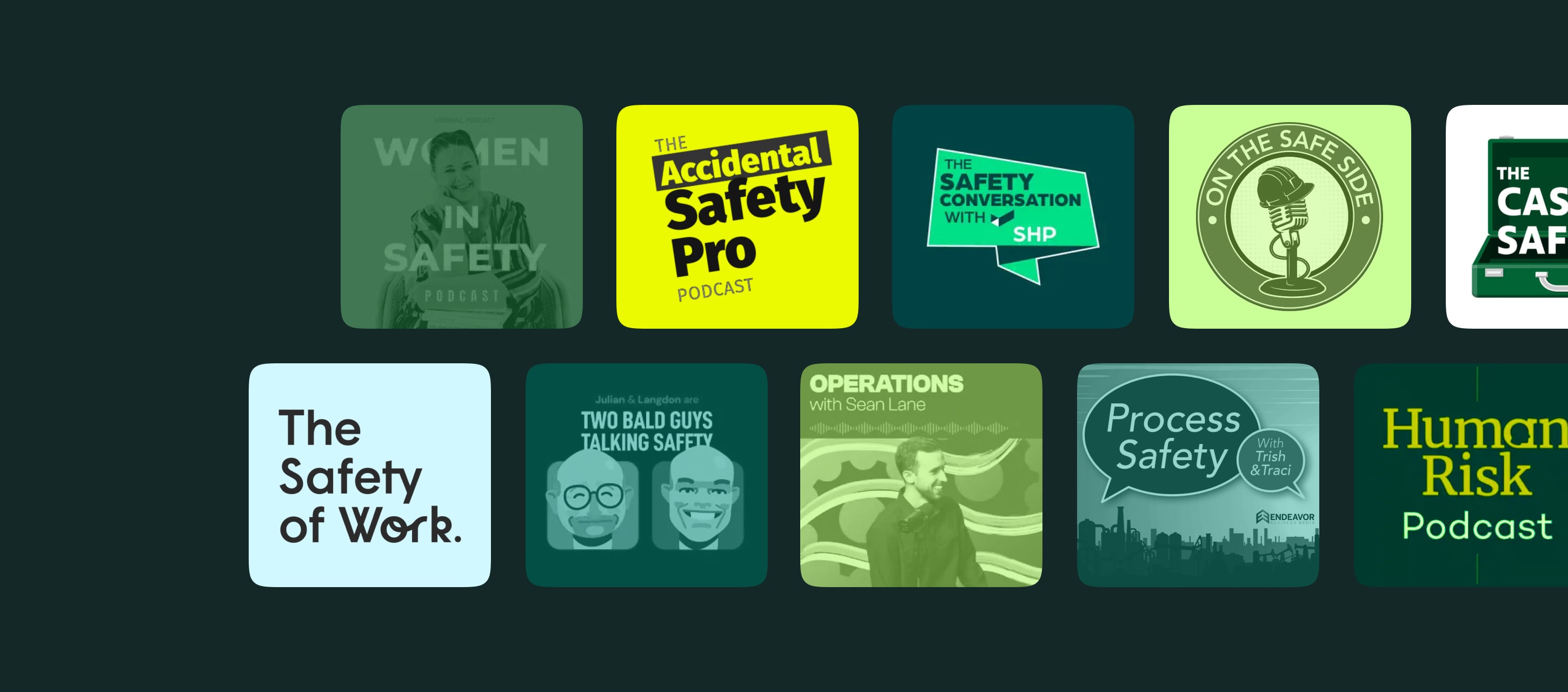Safety audits are imperative to organizations that operate in high-risk environments.
Two important things they disclose: What safety effort should stay the same, and what should change.In this article, you’ll learn how to perform safety audits using a safety management software, identifying workplace hazards, evaluating risk levels and implementing the necessary preventive measures.
Contents:
What Is a Safety Audit?
Safety audits are systematic evaluations of an organization’s processes, procedures and facilities to reduce the rate of accidents, injuries and illnesses and comply with safety regulations.
The auditing process has evolved with the integration of digital tools, providing a more streamlined and health and safety strategy.
Why Are Safety Audits Important?
First and foremost, safety audits protect your employees from severe injuries and even fatalities. They allow to find and correct potential hazards proactively, before serious incidents occur.
The auditing process also facilitates continuous improvements to safety protocols and procedures. Regular check-ups can illuminate small issues with the potential to turn into major hazards.
Depending on your industry, safety audits help comply with regulatory standards and guidelines. Which is a good feature as any ops managers knows that failure to submit required safety reports can result in significant fines and other legal penalties.
You can also save on the cost of workers’ compensation claims with a comprehensive safety program that includes regular auditing. In one study reported by the Occupational Health and Safety Administration (OSHA), businesses that adopted recommended safety practices lowered the cost per claim by 80% and the number of claims by 52%. They also reduced lost time per claim by 87%.
Audits support a culture of safety, which in turn enhances employee morale and productivity. Your company can value its workers by prioritizing their safety, leading to increased job satisfaction and commitment to the organization.
Read more: Read more: Paper vs. digital: why it’s more secure to manage your safety documentation with software
What Are the Different Types of Safety Audits?
Let’s take a closer look at the different types of safety audits commonly conducted.
Compliance Audits
Compliance audits focus on adherence to specific regulations and standards.
Your company can undergo a compliance audit to verify that you’ve met or exceeded required safety benchmarks. It also reveals areas you need to address to achieve compliance.
Process Safety Audits
You may want to evaluate how well your company’s safety protocols work within a specific process.
A process safety audit allows you to identify possible hazards in the process and develop improvements to minimize or remove these hazards.
Behavior-Based Safety (BBS) Audits
Behavior-based safety (BBS) audits focus on observing and evaluating employee behaviors.
This approach allows the auditors to identify any unsafe practices and recommend changes in response to their safety observations.
Hazard Identification Audits
A hazard identification audit is typically a broad overview of safety issues across the workplace.
Some hazard identification audits focus on specific areas like ergonomic, biological, chemical or physical risks.
How to Perform a Health and Safety Audit
The following step-by-step approach prevents you from overlooking potential hazards or misdirecting safety resources.
1. Prepare for the Audit
First, define a clear scope for the audit. You should outline the specific processes, areas and departments that will undergo evaluation. Next, you’ll assemble a team to manage the audit. Call upon team members at all levels of the organization to participate, including individuals who have expertise in safety regulations (for example, they know how to write an incident report).
Preparation also involves gathering resources. Identify the equipment, data and tools you’ll need for a comprehensive audit.
2. Review Existing Documentation
The audit begins with a thorough investigation of your company’s existing safety materials. Examples include:
- Safety procedures and policies
- Past incident report documents
- Previous audit filings
- Employee and management training records
Reviewing these items establishes a starting point as a comparison for improvement.
3. Conduct an On-Site Inspection
During this part of the process, your audit team will do a safety walkthrough across all work areas named in the scope of the audit. They’ll systematically inspect safety equipment and devote time to observing work practices.
Using dedicated digital tools at this stage can be a great help, resulting in a more accurate safety audit. For example, when using a tool like Fluix, your inspectors can capture relevant photos and videos, add voice recordings and submit accurate, timely observation reports.
Read more: Read more: Health and safety management software features
The inspection should also include a survey of your workforce. Find out how much employees know about the safety protocols, discuss their perception of hazards and gather feedback on the company’s safety culture.
4. Analyze Your Findings
Data-driven safety has become a big thing recently. In terms of audits, it suggests that after gathering the full scope of assessment data, you should review the findings to look for patterns that indicate workplace dangers.
You may want to categorize potential hazards as physical, biological, chemical or ergonomic depending on the extent of your planned audit.
In addition to listing each potential hazard uncovered, prioritize the list based on the impact on your business. Estimate the likelihood of an incident related to each hazard as well as the potential severity of an accident.
5. Propose Corrective Action
Starting with the most severe hazards, you should develop comprehensive recommendations for mitigation. Identify specific improvements to the safety procedures and steps such as enhanced employee education.
Assign a responsible person for each of the action steps, along with a team to assist that individual if necessary. You should also establish a timeline to implement mitigation efforts based on the risk prioritization exercise you completed in step 4.
An example: After conducting a safety audit, you’ve identified deficiencies in your lockout tagout (LOTO) procedures, particularly regarding the maintenance of equipment in the production area. The audit revealed instances where machinery was not adequately isolated during maintenance, posing serious safety risks to workers.
A corrective action suggested may be to introduce revisions to written procedures, implement digital lockout templates, add additional training for maintenance personnel, and adopt new lockout devices.
6. Compile Audit Reports
Finally, summarize your findings in a detailed safety audit report. It should clearly detail your recommendations and indicate priority action items. It should also include benchmarks for success. For example, you may state a goal of reducing near-incidents by 75% over the next six months.
Best Practices for Safety Audits
As we’ve mentioned above, safety audits software can serve as the driving force of a comprehensive digital safety audit.
These tools allow auditors to collect data in real-time during inspections, capturing visual evidence along with your notes for a streamlined approach. They also let you set automated notifications so you can keep track of deadlines and pending actions.
More tactics you can apply by using digital tools:
- Standardize audit processes across different locations and departments.
- Ensure offline capability allowing auditors to conduct safety inspections even in areas with limited or no internet connectivity.
- Implement dynamic forms that display relevant fields based on audit findings, reducing the time and effort required to complete audits.
- Capture rich media like photos, videos, and audio recordings to provide visual evidence of safety hazards or compliance issues.
- Incorporate GPS and timestamps.
- Implement automated reporting that generates comprehensive audit reports instantly.
- Take care of data security by choosing audit software with robust encryption, user authentication, and access control measures. (FYI, Fluix is exactly this type of software)
- Conduct regular training, safety walks, and introduce best practices for conducting safety audits.
Our particular advice when selecting a tool for the safety audit would be to look for intuitive, user-friendly interfaces. Because in the end, it’s your field teams who will fill in and submit reports.
For one of our customers, Siemens Gamesa, a global provider of wind power products, a user-friendly app was a game-changer when it came to digitizing their field operations:
“The app is user-friendly, self-explanatory, and easy to navigate. The mobility of the app used on an iPad has changed our operations exponentially.”
Corey Heinemann, Technical Reliability Manager, Siemens Gamesa
Read Read Siemens Gamesa’s success story for more insights and tactics
How Digital Safety Audits Can Benefit Your Business
A digital approach streamlines the audit process, reducing manual efforts and paperwork, and helps create a workplace safety culture. Real-time data entry and automated workflows contribute to a more efficient auditing experience.
Digital tools like Fluix eliminate the risk of errors associated with manual data entry. They help ensure the accuracy and reliability of your audit findings.
With real-time data collection and cloud-based solutions, organizations can generate audit reports promptly. Digital safety audits allow you to make data-driven decisions and implement preventive measures without potentially dangerous lag time.
Digital safety audit tools provide stakeholders with instant access to audit data and reports. This immediate visibility fosters transparency and accountability across the organization. The transition to digital tools reduces the reliance on paper, printing, and storage, resulting in cost savings for organizations in the long run.
FAQs
1. What types of digital tools are commonly used for safety audits?
Common digital tools for safety audits include mobile applications, cloud-based platforms and software solutions that support real-time data collection.
2. How can organizations ensure the security of digital audit data?
To ensure security, your company should rely on encrypted communication channels and access controls. It’s also important to choose a reputable and compliant software provider.
3. Can digital safety audit tools integrate with existing safety management tools?
Many digital safety audit tools are designed for seamless integration with a variety of safety management tools.
4. Are digital safety audits suitable across industries?
Business owners and managers in many different industries use audits as a versatile solution to improve workplace safety. You can adapt this strategy to manufacturing, healthcare, construction and countless other sectors.
Improving Your Safety Audits with Fluix’s Smart Automations
As companies strive to comply with evolving safety regulations, the adoption of digital tools contributes to a culture of improvement and proactive risk management.
Fluix is safety management software that can help improve your safety audit processes in several key ways.
- With our mobile-responsive digital forms, you can easily collect safety audit data directly from the field.
- In Fluix Form Builder, you can create customizable safety audit checklists tailored to your organization’s specific requirements.
- With Fluix’s automated workflows, you can set up predefined actions and notifications based on audit findings. This ensures that corrective actions are promptly initiated and followed up on, reducing response times and enhancing accountability.
- And Fluix can also serve as a centralized repository for all safety audit documentation, making it easy to access and manage audit reports, checklists, and related safety documents.
Most importantly, all our customers have a dedicated customer success manager who guides them through each stage of the adoption and onboarding. So you don’t need to stress out about being left on your own with a new tool.






